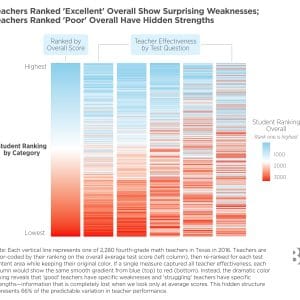Defining a good’s relevant market is a fundamental component to antitrust analysis. Without a properly defined market, regulators cannot fairly assess a company’s market power, or the harms incurred by anti-competitive behavior. The first step to defining a good’s relevant market is to identify its substitutes: goods or services that can be used in place of one another to fulfill the same need or want —goods or services that can be used in place of one another to satisfy the same need or want.
In this paper, the authors focus on a critical but often overlooked aspect of substitution analysis, network effects: a phenomenon where the value of a good or service increases as more people use it . A network effect occurs when the value of a good to one user depends on how many other people are using it. For example, the more users a social media platform has, the more valuable it may become to any individual user. The authors investigate how overlooking such network effects can distort substitution patterns and, by extension, market definitions.

The authors conduct an online survey of 900 active TikTok users aged 18 to 27 between January 6-9, 2025.1 Respondents are first provided background information on the pending TikTok ban. Then, respondents are randomly assigned to an alternative social media platform—either YouTube, Instagram, or Snapchat—and asked to identify the minimum amount of money that they would accept to deactivate the platform under three different scenarios: 1) TikTok is not banned (baseline); 2) TikTok is not banned but the respondent is forced to deactivate their TikTok account (individual deactivation); and 3) TikTok is banned (collective deactivation).
The authors compare the valuations from the three different scenarios to assess the substitutability of the alternative platforms to TikTok. They calculate both the difference in the percentage of respondents who value their alternative platform more in one scenario vs. another, as well as the differences in the average valuation of the alternative platforms across the different scenarios. The authors find the following:
Users value alternative platforms more when TikTok is collectively banned compared to when there is no ban. The net fraction of users who report higher valuations under the collective ban is 48.1 percentage points for Instagram, 41.8 p.p. for YouTube, and 14.8 p.p. for Snapchat, indicating that all three platforms are perceived as substitutes for TikTok in a coordinated exit context.
Comparing collective versus individual TikTok deactivations reveals strong network effects. The net fractions of users with relatively higher valuations under collective deactivation (compared to individual deactivation) are 25.0 percentage points for Instagram, 16.0 p.p. for YouTube, and 15.5 p.p. for Snapchat, suggesting that the utility of substitutes depends substantially on whether peers also migrate.
When TikTok is deactivated individually (compared to no ban), there is a net increase of 13.9 percentage points in users who value Instagram more, and 24.4 percentage points for YouTube. For Snapchat, the net fraction is negative and close to zero, indicating it is not perceived as a substitute when users leave TikTok on their own. This suggests Snapchat’s utility depends heavily on peer coordination, likely due to its core function as a messaging app.
In addition to the comparison of platform valuations across the three scenarios, the authors also find:
A net positive fraction of respondents expect to spend more time on other social apps—namely, Instagram, YouTube, and Snapchat—under the TikTok ban compared to the individual TikTok deactivation. Conversely, intended substitution toward non-social activities, such as playing phone games or meditating, is weaker under the TikTok ban than under the individual TikTok deactivation.
Respondents’ expectations about changes in others’ time use on Instagram, YouTube, and Snapchat align with their substitution patterns. Users who expect an above-median increase in the time their friends spend on the assigned platform exhibit a larger gap in valuation between the TikTok ban and individual TikTok deactivation.
Antitrust regulators take note. Accounting for network effects is often critical in defining a good’s relevant market. For TikTok, accounting for network effects reveals that other social apps are closer substitutes than suggested by fixed-network estimates, making it more likely that they are part of the relevant market. At the same time, our estimates suggest that non-social activities—such as video gaming and meditation—are weaker substitutes for social media, making it less likely that they are part of the relevant market.
1The timing of the survey is crucial to the study design because there was tremendous uncertainty regarding TikTok’s future availability in the US due to a pending ban on January 19th. The study leveraged the plausibility that TikTok would no longer be available to US users in order to elicit responses that are more reliable than if TikTok’s ban were purely hypothetical.












